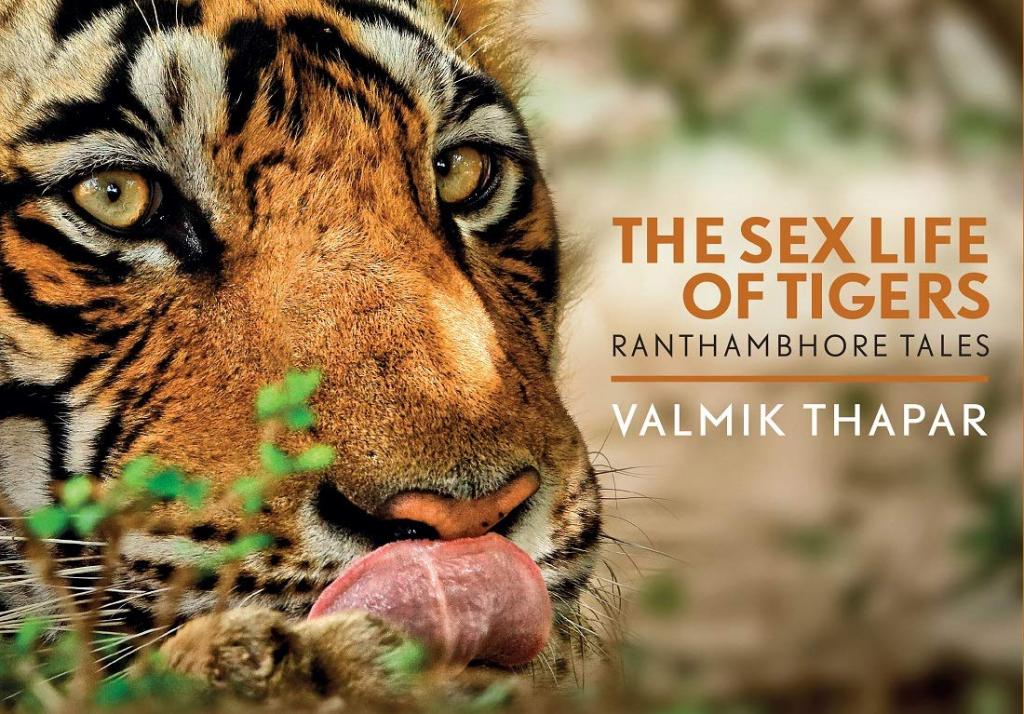

Down To Earth talks to veteran conservationist Valmik Thapar about his book 'The sex life of tigers', the cat’s mating rituals and why his book is an important addition to tiger literature



India's very own 'Tigerman' Valmik Thapar has spent more than four decades of his life in studying the tiger. An author of numerous books on the big cat, Thapar's latest offering is about a hitherto unexplored topic, namely the sex life of tigers. In an interview with Down To Earth, Thapar talks about what motivated him to write on the subject. He also reveals interesting insights about tiger sexual behaviour. Excerpts:
What was the main reason behind writing on this topic?
The sexual world of the tiger has been invisible to the world. It takes place without visibility in forests and human observers seldom have a chance to witness it. There has been no work or study done on this subject anywhere in the world. It took me 43 years of tiger watching to encounter mating tigers at close quarters. So, after the encounters of 2018, I decided to put this book together.
Is your book a first of sorts on this subject?
Yes, this is the first time I have done a book on this subject and the first time anyone in the world has done such a book.
What advantages did Ranthambhore provide over other tiger reserves as far as studying tiger mating was concerned?
The advantage in Ranthambhore is that the forest is a dry, deciduous forest where visibility is good and you can actually see tigers properly and at close quarters. Visibility is good and in-depth analysis possible and much more so than other thicker habitats or reserves elsewhere in India.
How do tigers and tigresses find mates, given that their territories overlap and there can sometimes be more than one individual of either sex in a certain area?
Tigers of both sexes detect each other’s presence by mainly odour that they detect and can identify individually. A tigress in oestrus or her reproductive cycle will be detected by the nearby male tiger who will follow her scent and find her. Sometimes, when the territories of two males overlap, one of the males will either retreat or both will fight till one of them submits and runs away or is seriously injured. Where tiger density is high, there is a greater chance of such battles over the sexual rights on a female.
Why does a male tiger catch hold of the scruff of a female’s neck at the time of a coupling? I read that it is quite dangerous and that the female is very vulnerable since the male’s bite can even kill her. Did you ever come across any such case during the course of your career, of a mating in the wild having gone wrong?
Male tigers catch the scruff of the female’s neck to firstly immobilise her while penetrating her since the process is painful and the female could turn around and slap him.....it also gives him better balance during intercourse. His hold is firm but I have never seen it lead to injury in the female or in some way gone wrong. Experienced males are experts at doing this compared to younger males.
What is the average frequency of couplings? Would they be different for wild and captive tigers?
Over three to four days, tigers can mate anywhere from 200 to 250 times and sometimes it can be as frequent as every 5 to 7 minutes. And this frequency is facilitated by the Baculum bone in the penis.
Do courtship and actual mating differ slightly among the six extant tiger subspecies?
In my opinion, all the subspecies of the tiger will follow a similar pattern with a variance because of site-specific factors in terms of tiger density—it is more difficult for a Siberian tiger to find a mate because of low densities than a Ranthambhore tiger.
It is well-known that tigers are intense during sex. Could it be this intensity that has led to the legends about tiger penises being aphrodisiacs in Chinese and Southeast Asian cultures?
Yes, it is the ability of the tiger to mate as often as it does that has led to the tiger penis being in much demand and used in soups and liquor as aphrodisiacs. This one fact has resulted in excessive poaching of the animal and therefore the depletion of numbers across Asia.
A human should never blunder into mating tigers, isn’t it?
If anyone is lucky enough to encounter mating tigers, be silent and watch quietly. Treat the animals with respect and they will do the same.
Will India’s and the world’s ever-diminishing tiger habitat ever cause a change in tiger reproductive behavior? For instance, I read about something called “false mating”.
As tigers diminish, so will encounters with mating tigers as couples will find it even more difficult to find each other. False mating is when a tigress deceives a male from attacking her cubs by distracting him. This process is described in detail in the book and has nothing to do with diminishing tigers.

We are a voice to you; you have been a support to us. Together we build journalism that is independent, credible and fearless. You can further help us by making a donation. This will mean a lot for our ability to bring you news, perspectives and analysis from the ground so that we can make change together.
India Environment Portal Resources :

Comments are moderated and will be published only after the site moderator’s approval. Please use a genuine email ID and provide your name. Selected comments may also be used in the ‘Letters’ section of the Down To Earth print edition.